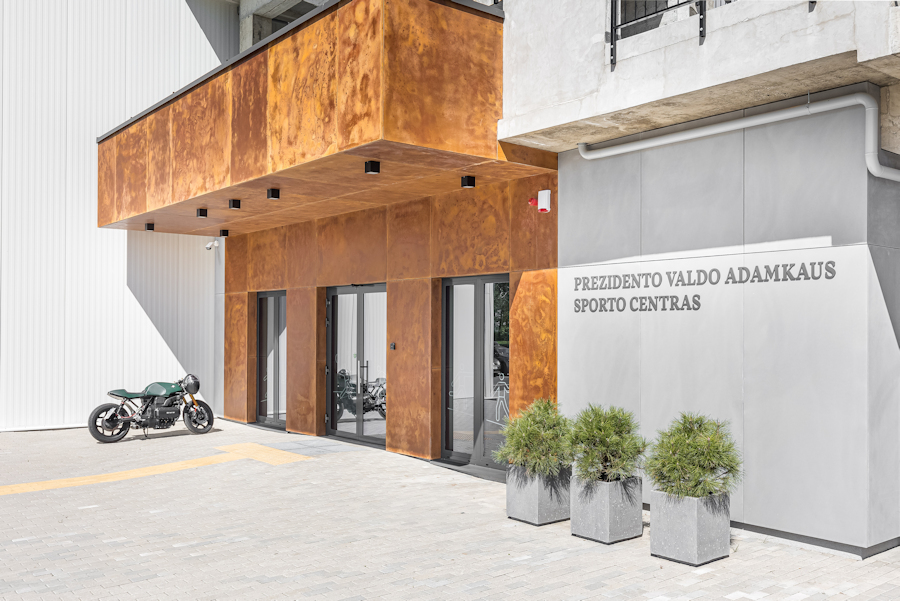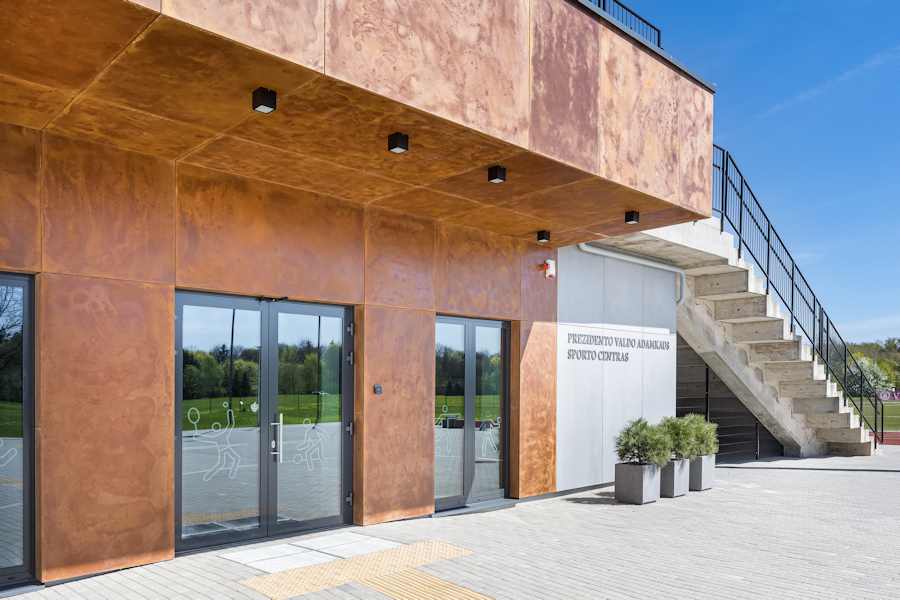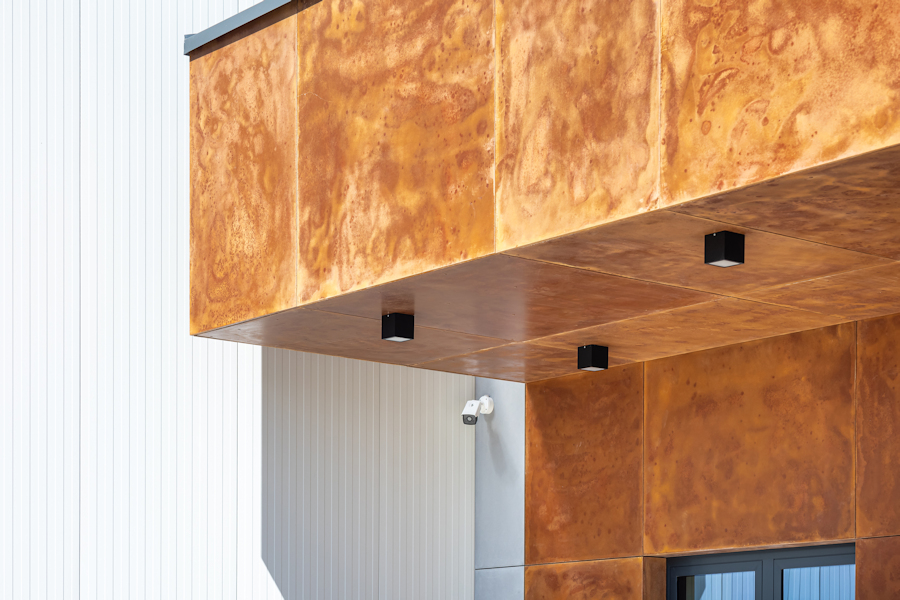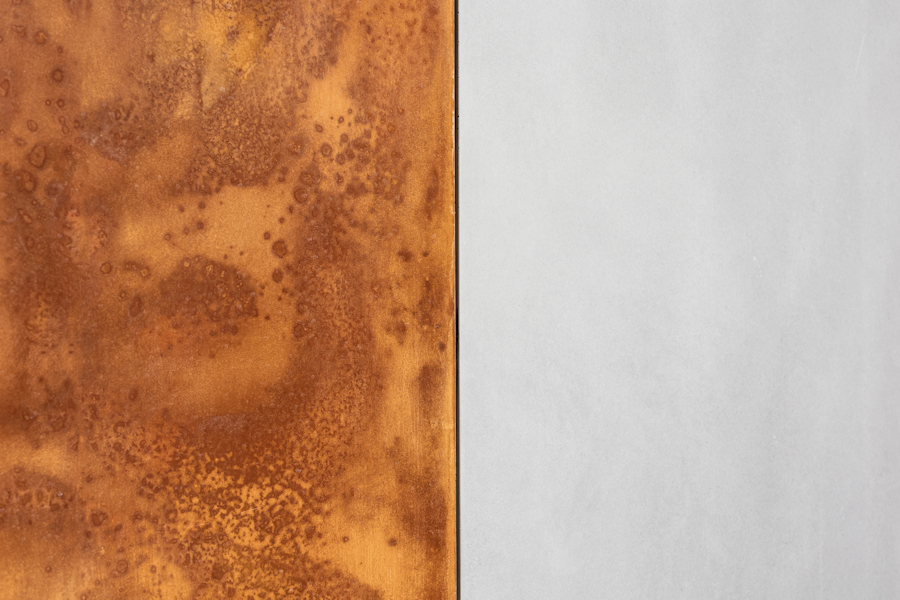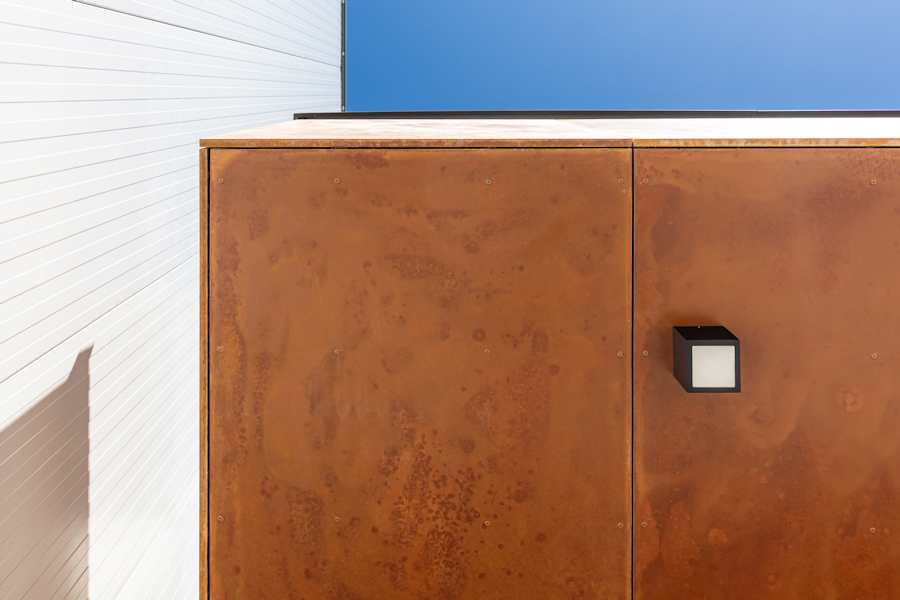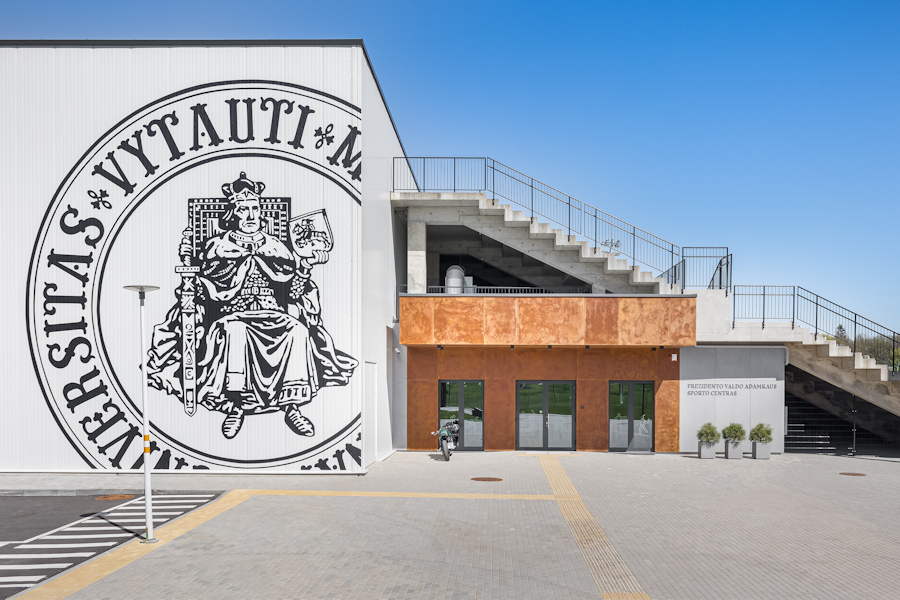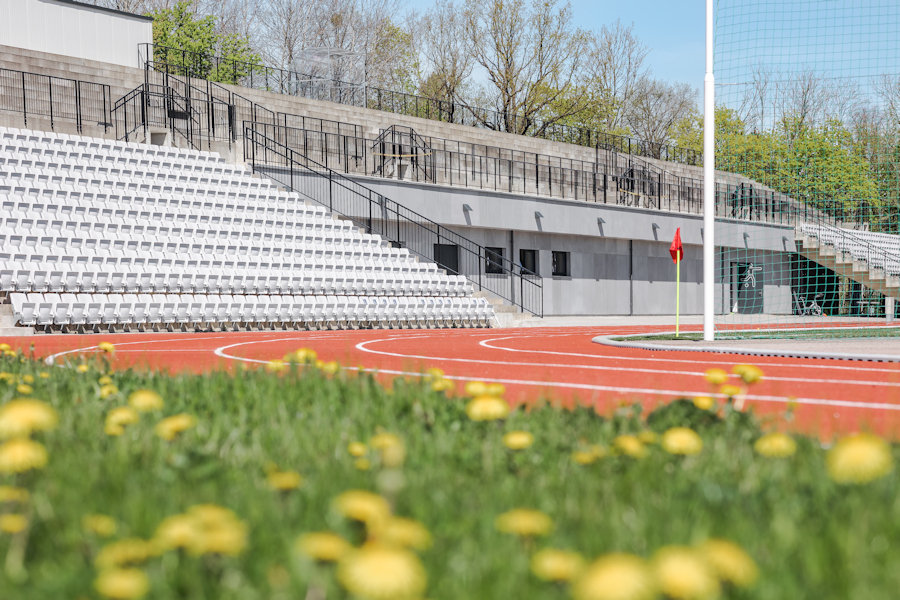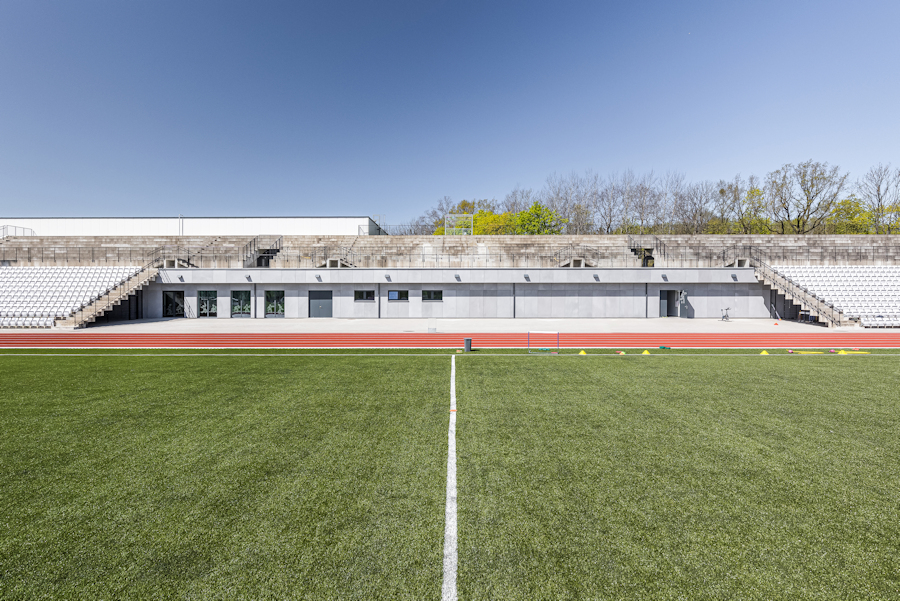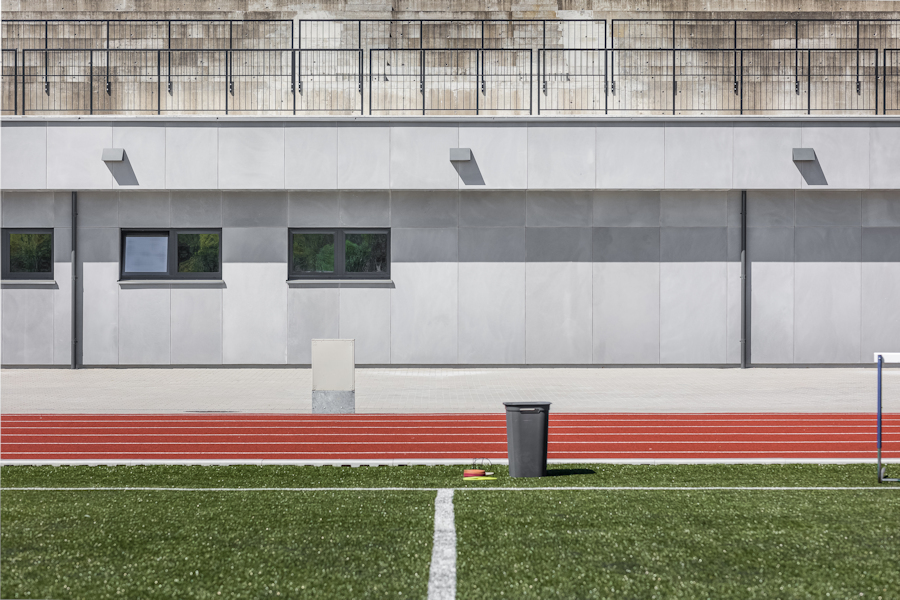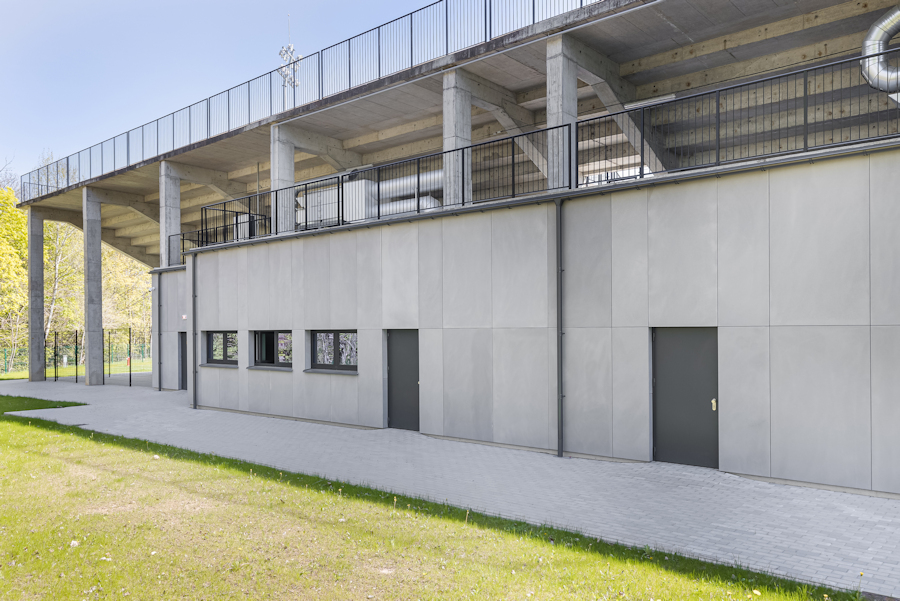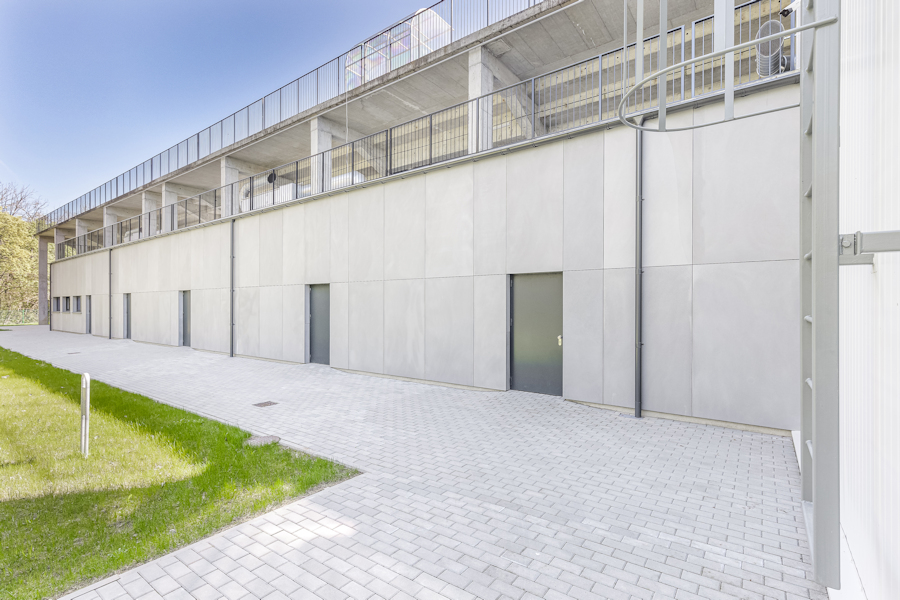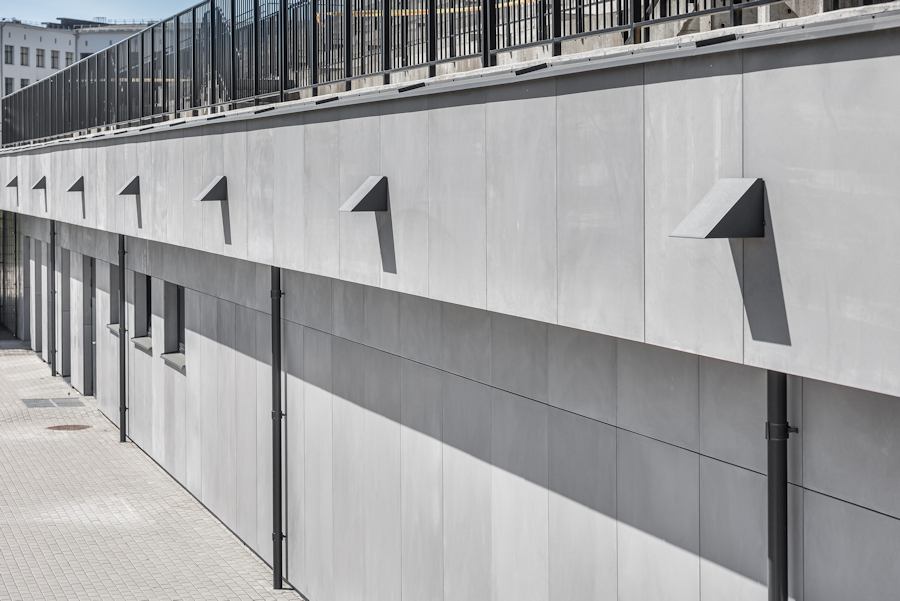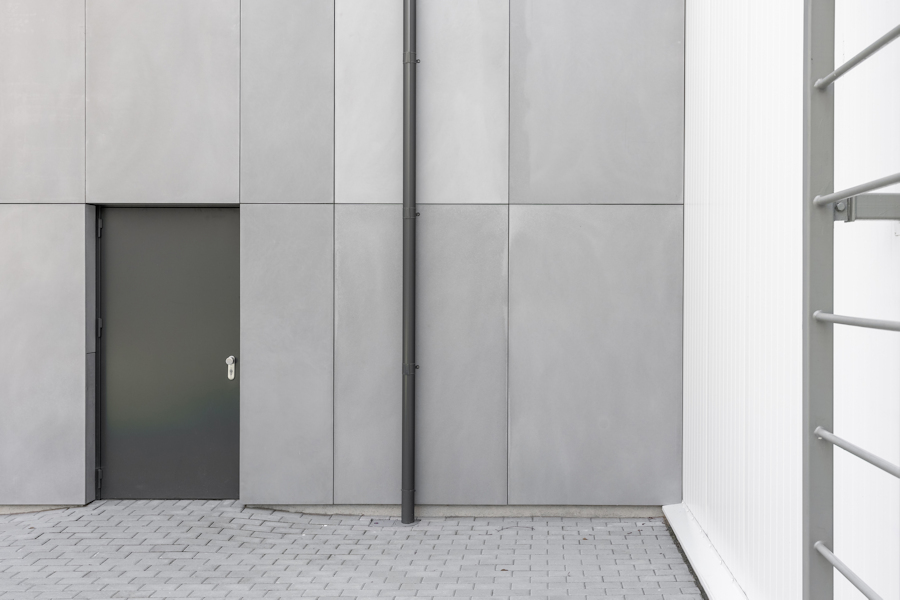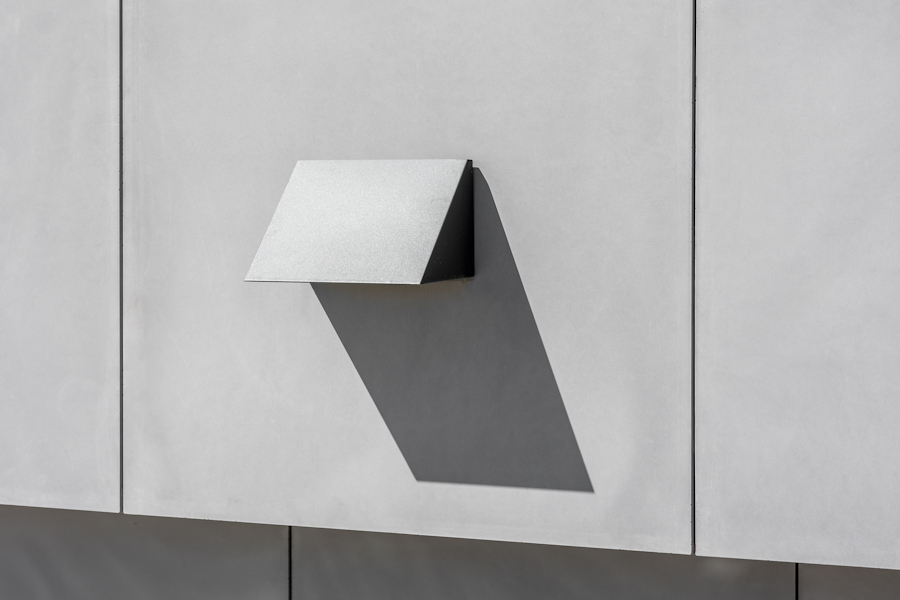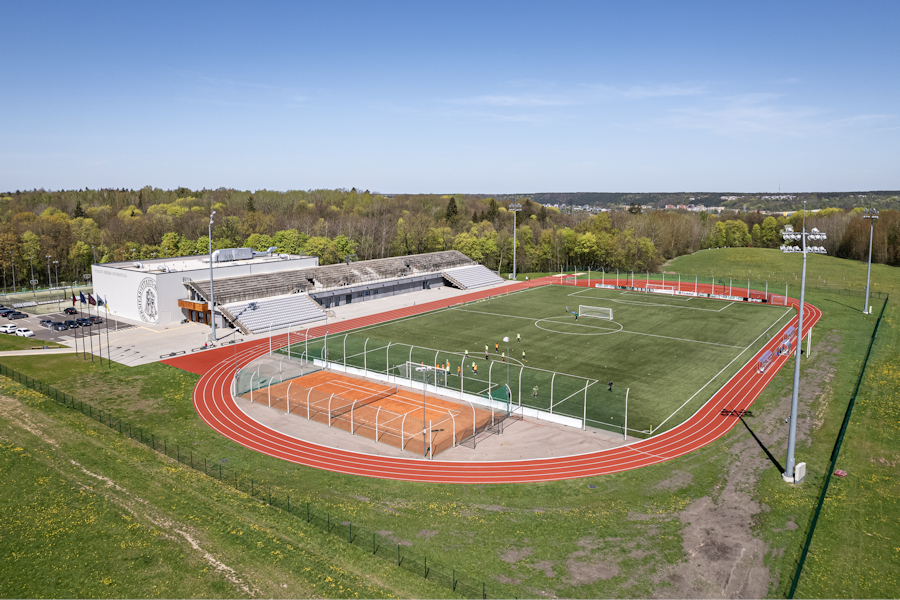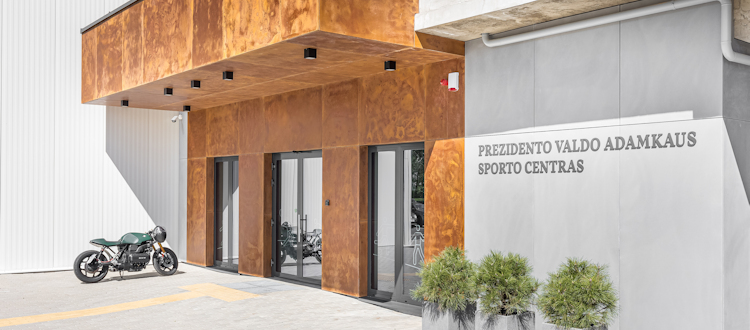
Sports Facility with UHPC in a Noble Look
Façade panels for university sports center in Lithuania with special binder Dyckerhoff NANODUR
In Kaunas, there is Lithuania’s largest University Sports Center. It is part of the Vytautas Magnus University and was named after Valdas Adamkus, the former Lithuanian president and Honorary doctor of the University who was very much in favor of sports himself.
Besides a complete football stadium with tartan tracks and long jump pit as well as additional fields for other sports, there is also a grandstand building providing seats for 1,000 people with a gym and an enclosed large sports hall. The façade of the grandstand building consists of more than 800 sqm of large-sized UHPC panels – with various dimensions up to 1,400 mm times 3,100 mm (width/height) and a thickness of just 20 mm. These panels were produced by Hibeton, based in the Lithuanian capital Vilnius, that is specialized in the production of precast concrete elements for façades or interior use as well as 3D concrete elements from ultra high performance fiber reinforced concrete.
The base for the UHPC was Dyckerhoff NANODUR Compound 5941 white. For the whole project 20 tons of this special binder premix for ultra high performance self-compacting concrete were used, which is highly suitable for producing precast elements with high requirements. In addition to graded sand (maximum grain size 0-2 mm) and various admixtures, the formulation contains reinforcement in the form of thermoplastic synthetic fibers.
There are two types of panels: 770 sqm are light gray and 60 sqm – especially in the entrance area – are rusty brown and don’t look like concrete at all, but like rusty iron. This optics was achieved by adding brown and red pigments and a post-treatment of the finished concrete parts with a water solution of iron salts. This is not a very common procedure, however, the company Hibeton already has had experience with this and other metallic colorings from other projects. But the light gray panels show natural color variations, too, which resulted from the molds.
Panels made of UHPC were used for this project "because, in particular, their mechanical properties and durability outperform comparable elements made of glass-reinforced concrete (GRC)", states the manufacturer, Hibeton.
Since very small component diameters are possible with UHPC, the CO2 footprint of UHPC façades is significantly lower than that of façades made of normal concrete. In the case of the façade of the University Sports Center in Kaunas, around 11 kg of CO2 per square meter were emitted during the production of the binder (net figures: solely CO2 emissions from fossil fuels). The lower panel weight usually also reduces CO2 emissions for transport and crane services.
The German consulting and engineering company durcrete, a long-standing technology partner of Dyckerhoff and experienced in the use of UHPC with NANODUR Compound 5941, assisted the manufacturer in all phases of construction.
All photos: © Hibeton
Dyckerhoff GmbH, Product Marketing
Please contact for additional information:
Iris Weise-Rosch, phone: +49 611 676-1187
marketing@dyckerhoff.com


